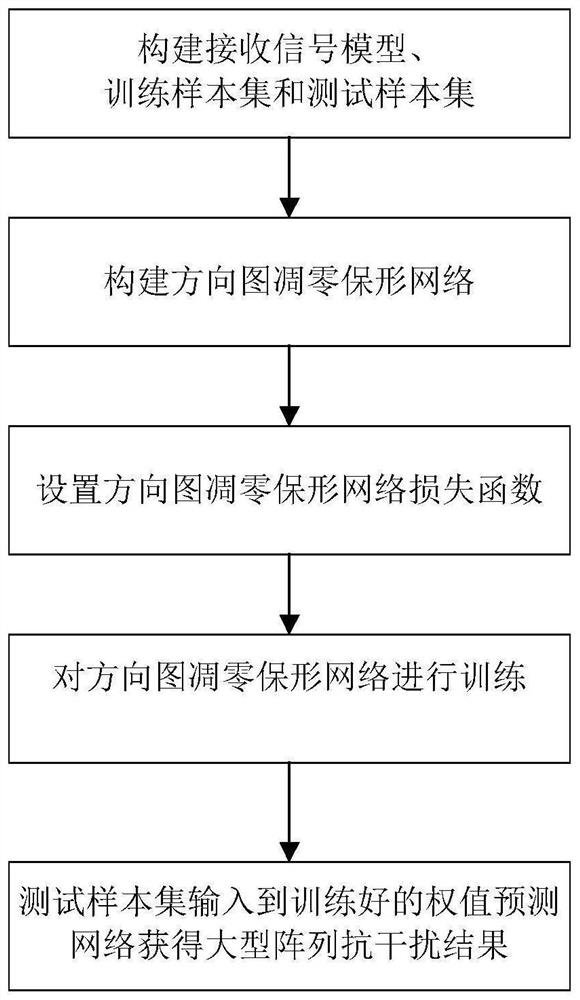Large-scale array fast adaptive anti-interference method based on convolutional neural network
A convolutional neural network and self-adaptive technology, which is applied in the field of fast self-adaptive anti-jamming and target detection of large arrays, can solve the problems of affecting the degree of freedom of the system, excessive time-consuming self-adaptive weights, complicated training process, etc., to reduce Calculation amount, reducing target angle measurement error, and reducing the effect of false alarm probability
- Summary
- Abstract
- Description
- Claims
- Application Information
AI Technical Summary
Problems solved by technology
Method used
Image
Examples
Embodiment Construction
[0019] The present invention will be further described in detail below in conjunction with the accompanying drawings and specific embodiments.
[0020] refer to figure 1 , the implementation steps of this example are as follows:
[0021] Step 1, construct phased array radar receiving signal model, training sample set and test sample set.
[0022] 1.1) According to the target signal E(t,θ in the planar array model e ,φ e ) and the interference signal F(t,θ in the planar array model f ,φ f ) and random noise signal G(t) to construct a 28-row 28-column uniform planar phased array radar receiving signal model X with an array element interval of 1 mm is:
[0023] X=E(t,θ e ,φ e )+F(t,θ f ,φ f )+G(t),
[0024] in, is the complex envelope of the target signal in the planar array model, is the steering vector of the target signal, S e (t)=2*exp(j*20*t) the complex envelope of the target signal, t is the moment when the radar receives the signal, t>0, N r is the number ...
PUM
 Login to View More
Login to View More Abstract
Description
Claims
Application Information
 Login to View More
Login to View More - Generate Ideas
- Intellectual Property
- Life Sciences
- Materials
- Tech Scout
- Unparalleled Data Quality
- Higher Quality Content
- 60% Fewer Hallucinations
Browse by: Latest US Patents, China's latest patents, Technical Efficacy Thesaurus, Application Domain, Technology Topic, Popular Technical Reports.
© 2025 PatSnap. All rights reserved.Legal|Privacy policy|Modern Slavery Act Transparency Statement|Sitemap|About US| Contact US: help@patsnap.com



